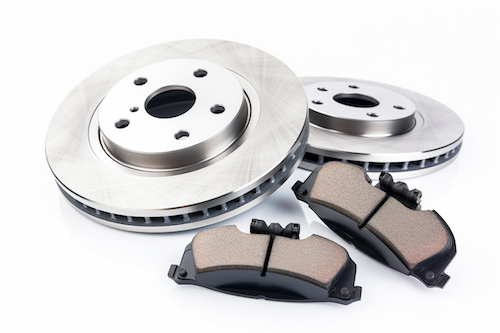Brake Pad Replacement: A Complete Guide to Types, Maintenance, and Installation

Understanding the inner workings of your vehicle can be overwhelming, but it's essential for every driver. One of the most important components to know about is the brake pad. These small parts are critical in ensuring that your car stops when you need it to. In this guide, we'll walk you through everything you need to know about brake pads, including types, how to tell when they're worn out, and tips for maintaining them.
Brake pads are a vital part of your braking system. When you press the brake pedal, the pads press against the rotors, creating friction that slows your car down. This process is what gives you control over your vehicle. But like any other component, brake pads wear down over time and eventually need to be replaced.
The Importance of Brake Pads in Vehicle Safety
Brake pads are often overlooked, but they play a crucial role in keeping you safe on the road. They act as the primary contact point between your car’s braking system and the rotors. Without properly functioning brake pads, your ability to stop safely could be compromised. High-quality brake pads not only improve stopping power but also last longer, reducing the need for frequent replacements.
Why Quality Matters
Not all brake pads are created equal. Cheap or low-quality pads may wear out quickly, leading to poor performance and increased risk of accidents. On the other hand, high-quality pads offer better durability, less noise, and improved braking efficiency. Investing in good brake pads can save you money in the long run by reducing maintenance costs and improving safety.
Types of Brake Pads: Which One Is Right for You?
There are three main types of brake pads available: semi-metallic, ceramic, and organic. Each has its own advantages and disadvantages, making them suitable for different driving conditions and vehicle types.
Semi-Metallic Brake Pads
Semi-metallic pads are the most common type. They’re made from a mix of metal fibers and organic materials, offering good heat resistance and durability. These pads are ideal for heavy-duty use and are commonly found in trucks and SUVs. However, they can be noisier than other types and may produce more brake dust.
Ceramic Brake Pads
Ceramic pads are known for their quiet operation and reduced dust. Made from ceramic fibers and non-ferrous materials, they offer excellent performance and longevity. They are often used in high-performance vehicles and are a popular choice for drivers who want a smoother ride with less noise.
Organic Brake Pads
Organic pads are the most affordable option and are typically quieter than semi-metallic ones. However, they tend to wear out faster and aren’t recommended for high-performance driving. They are best suited for city driving where frequent stops are common.
Choosing the right type of brake pad depends on your driving habits, vehicle type, and budget. Always check your owner’s manual for manufacturer recommendations.
When Should You Replace Your Brake Pads?
Brake pads don’t last forever. Over time, the friction material wears down, reducing their effectiveness. If you wait too long to replace them, you risk damaging other parts of your braking system. Here are some signs that it’s time for a replacement:
Mileage and Wear Indicators
Most manufacturers recommend replacing brake pads every 25,000 to 70,000 miles, depending on driving conditions. Many modern vehicles come with wear indicators that make a squealing sound when the pads are worn. This is a clear sign that it’s time to get them replaced.
Other Warning Signs
In addition to the squeaking noise, other signs include vibrations when braking, pulling to one side, and longer stopping distances. If you notice any of these, it’s best to have your brakes inspected by a professional as soon as possible.
How to Extend the Life of Your Brake Pads
Proper maintenance can significantly extend the life of your brake pads. Here are some tips to help you keep them in good condition:
- Perform regular inspections to check for wear and tear.
- Drive smoothly and avoid sudden stops whenever possible.
- Avoid carrying unnecessary weight in your vehicle.
- Maintain a safe distance from other cars to reduce the need for hard braking.
- Check your brake fluid levels regularly and top them off if needed.
- Have your brakes professionally serviced at least once a year.
By following these steps, you can ensure that your brake pads last longer and continue to perform well.
Why Choose Lamb’s Tire & Automotive for Brake Repair?
If you're looking for reliable and professional brake repair services in Austin, look no further than Lamb’s Tire & Automotive. Our ASE-certified mechanics are experts in brake maintenance and replacement. Whether you need a simple pad change or a full brake system inspection, we’ve got you covered. We use high-quality parts and advanced tools to ensure your brakes are always in top condition.
Don’t wait until it’s too late. Schedule a brake inspection today and keep your vehicle safe on the road. With our expert service, you can drive with confidence knowing your brakes are working properly.
Waste Food Production FIBC Bag
Waste Food Production FIBC Bag, jumbo bags big bag,Bulk Container Bags
Zhejiang Changying Plastic Packaging Products Co., Ltd. , https://www.cyfibc.com